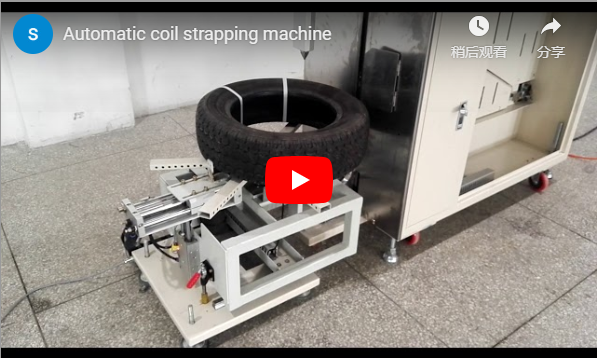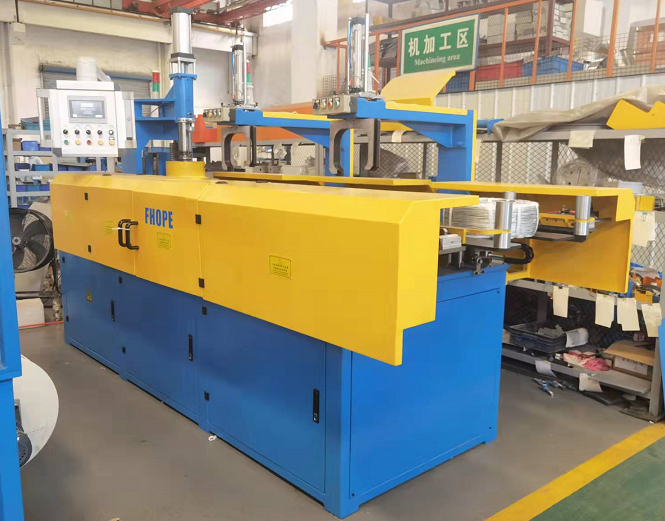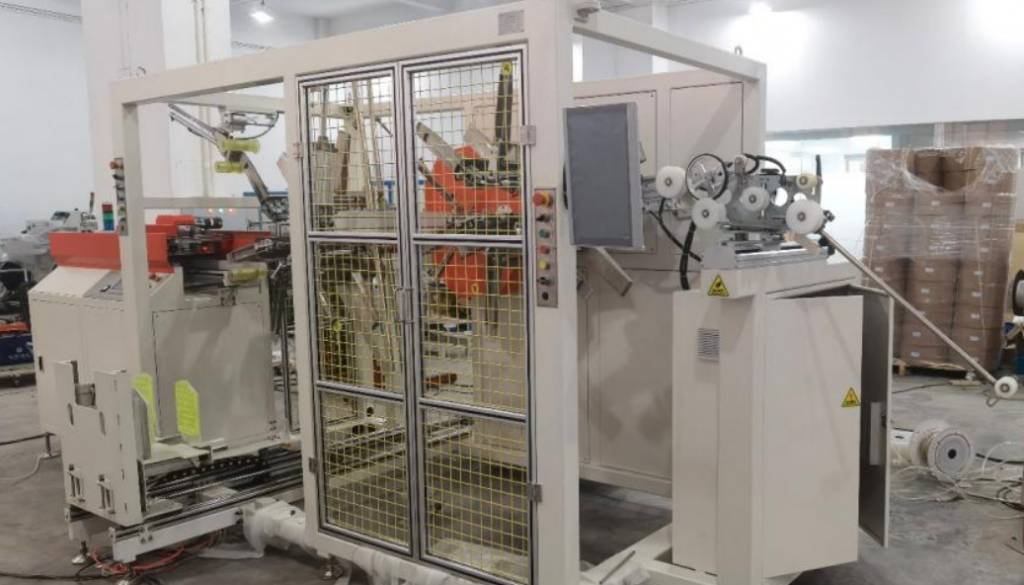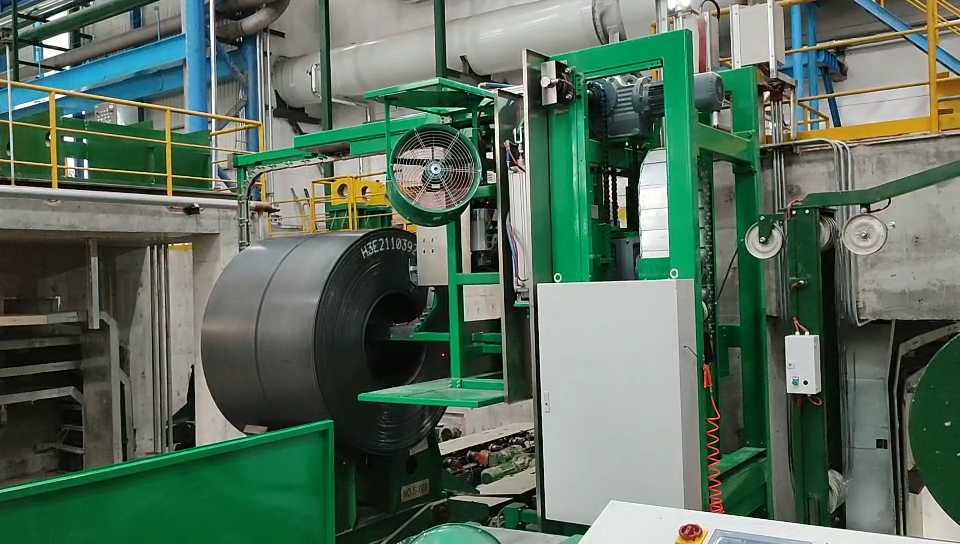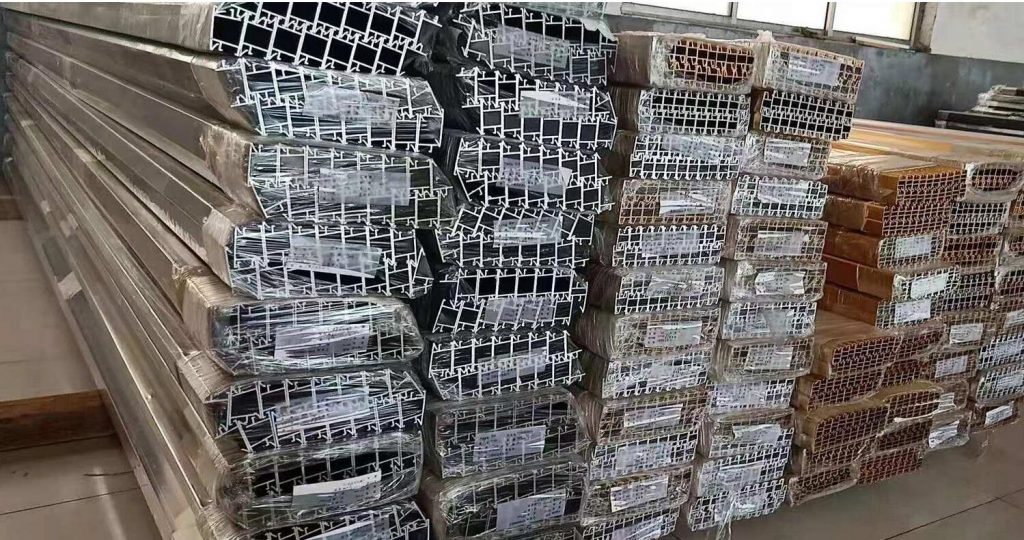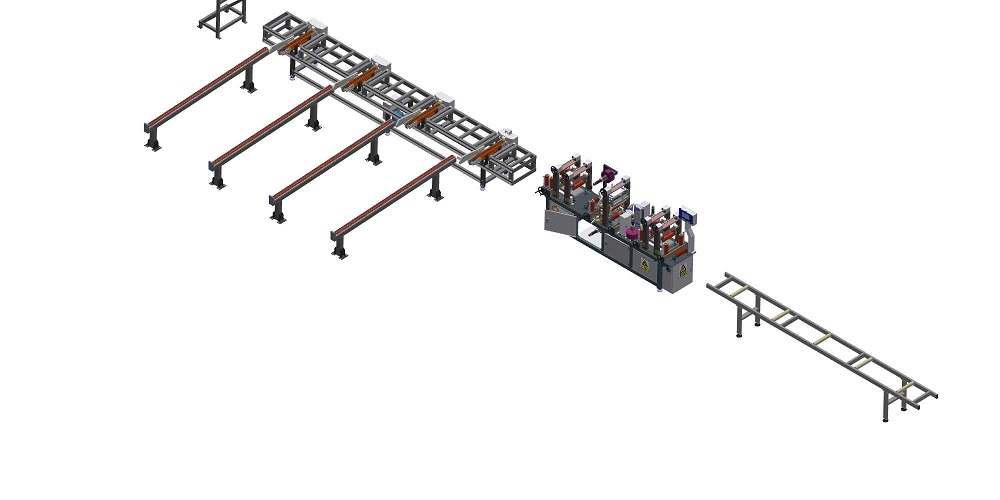Enhancing Logistics with Automated Steel Wire Pipe Bundling
The efficient and secure handling of steel pipes presents a significant logistical challenge within the steel manufacturing and distribution sectors. Addressing this need, automated steel wire binding machines provide a robust solution, enhancing both safety and operational efficiency. This technology focuses on utilizing high-tensile steel wire to create tightly secured bundles of steel pipes, preparing them optimally for transport and storage. The system showcased demonstrates a leap forward from manual or semi-automated processes, aligning with industry demands for higher throughput and reduced manual intervention, as frequently highlighted in publications like MM MaschinenMarkt concerning production automation trends.
Operational Principle and Technology: Precision Engineering for Robust Bundling
The automatic steel pipe bundling machine employs a sophisticated sequence of operations, meticulously controlled to ensure bundle integrity. The process typically involves:
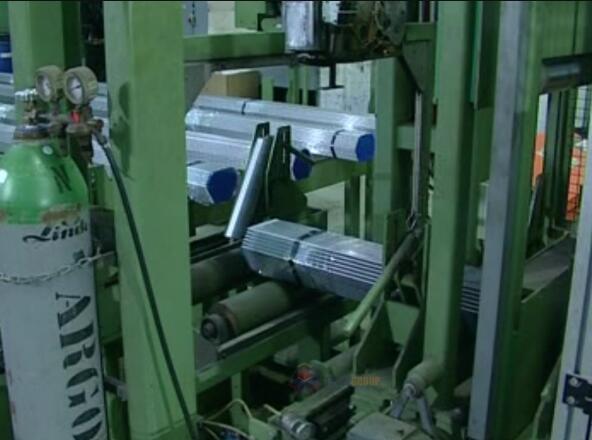
- Loading & Alignment: Steel pipes are loaded onto conveyor systems or support structures, often V-blocks, ensuring proper alignment for uniform bundling.
- Wire Feeding & Wrapping: A precision wire feeding mechanism dispenses the steel wire, guiding it around the aligned pipes. The wrapping head orbits the bundle multiple times based on pre-programmed parameters corresponding to bundle size and weight. Research published in the Journal of Manufacturing Processes often explores the optimization of such wrapping patterns for load stability.
- Tensioning: A critical phase where a high-torque tensioning system applies controlled force to the steel wire. This ensures the bundle is compact and movement between pipes is minimized during handling. Modern systems, sometimes referencing designs seen in patent literature (e.g., exploring adaptive tension control mechanisms), ensure consistent tension regardless of bundle irregularities.
- Binding/Knotting/Welding: The wire ends are securely joined. Depending on the machine's specific technology, this can involve twisting and knotting or, in more advanced systems, resistance welding for a stronger, lower-profile join.
- Cutting & Ejection: The bound wire is cut cleanly, and the completed bundle is ejected or transferred to the next stage in the logistics chain (e.g., weighing, labelling, or storage).
Key Components Driving Performance
- Heavy-Duty Steel Frame: Provides structural rigidity and vibration damping for consistent operation.
- Pipe Support and Alignment System: Ensures pipes are correctly positioned (e.g., adjustable V-blocks, cushioned supports for sensitive surfaces).
- Servo-Driven Wire Feeding System: Offers precise control over wire speed and placement.
- Orbital Wrapping Ring/Arm: Carries the wire dispensing and tensioning tools around the bundle.
- High-Torque Tensioning Mechanism: Applies and maintains the required binding force.
- Wire Joining Unit: Executes the knotting, twisting, or welding process.
- PLC Control System (e.g., Siemens S7 / Allen-Bradley ControlLogix): Orchestrates all machine functions, allows parameter adjustments via an HMI (Human-Machine Interface), and integrates safety interlocks conforming to CE or relevant industry standards.
Technical Specifications: Performance Data and Capabilities
While specific configurations vary, typical performance parameters for industrial-grade automatic steel wire binding machines include:
- Machine Series: (Example: FHOPE-SWSB Series or similar industrial designation)
- Pipe Diameter Range: Ø50 mm - Ø610 mm (Adjustable based on model)
- Pipe Length: Typically handles lengths up to 12 meters or more.
- Bundle Weight Capacity: Engineered for heavy loads, often up to 5 metric tons or higher.
- Compatible Wire Type: High-tensile galvanized or annealed steel wire (e.g., conforming to standards like ASTM A641 or EN 10244).
- Wire Diameter Range: Commonly 2.0 mm - 4.0 mm.
- Bundling Cycle Time: Highly variable based on bundle size and number of wraps, potentially ranging from 45-90 seconds per bundle.
- Adjustable Tensioning Force: Programmable, often reaching up to 8,000 N or more, ensuring secure binding for various pipe dimensions and weights.
- Control Interface: Touchscreen HMI for recipe management, diagnostics, and operational control.
- Power Requirements: Typically 400V, 50/60Hz, 3-Phase, specific consumption depends on configuration.
Advanced Features and Customization: Tailored Solutions for Diverse Needs
Modern steel wire bundling systems offer flexibility beyond basic operation:
- Programmable Wrap Patterns: Operators can define the number of wire wraps and their pitch along the bundle length via the HMI.
- Adaptive Tension Control: Sensors can potentially adjust tension based on bundle characteristics.
- Cushioned Supports: Optional V-block padding protects coated or sensitive pipe surfaces during bundling.
- Integrated Systems: Can incorporate upstream/downstream conveyors, bundle weighing stations, automatic labelling, and data logging for quality assurance and traceability, feeding information into plant MES or ERP systems.
- Safety Features: Comprehensive guarding, light curtains, emergency stops, and access interlocks are standard for operator safety.
Benefits and Industrial Applications: Driving Safety, Efficiency, and Cost Reduction
The adoption of automatic steel wire bundling technology delivers tangible advantages, frequently discussed in industrial efficiency reports:
- Enhanced Transport Safety: Uniformly tensioned steel wire significantly reduces the risk of bundle collapse or pipe shifting during road, rail, or sea transport.
- Product Integrity Protection: Minimizes scuffing, scratches, and deformation often associated with loose bundling or manual handling methods.
- Increased Operational Throughput: Automation drastically reduces the time required per bundle compared to manual or semi-automatic methods, improving overall line productivity.
- Reduced Labour Costs & Ergonomics: Frees up personnel from strenuous and potentially hazardous manual bundling tasks.
- Optimized Logistics: Creates consistent, stable bundle dimensions, simplifying storage, stacking, and loading/unloading operations.
- Material Efficiency: Precise, automated wire application can optimize wire consumption compared to manual wrapping.
These machines are indispensable assets for:
- Steel Pipe Manufacturers
- Steel Service Centers and Processors
- Large-Scale Construction Projects
- Pipe Coating Facilities
- Logistics and Distribution Hubs handling steel products
Conclusion: Investing in Automated Bundling Technology
The automatic steel wire binding machine represents a critical investment for any operation handling large volumes of steel pipes. By combining robust mechanical engineering with sophisticated PLC controls, these systems deliver consistent, high-integrity bundles reliably and efficiently. As highlighted by industry benchmarks and publications like MM MaschinenMarkt, such automation is key to maintaining competitiveness through improved safety, reduced operational costs, and enhanced product quality throughout the supply chain. This technology ensures steel pipe bundles are prepared professionally, ready for secure and efficient transportation globally.
For more pipe packing machine just here

